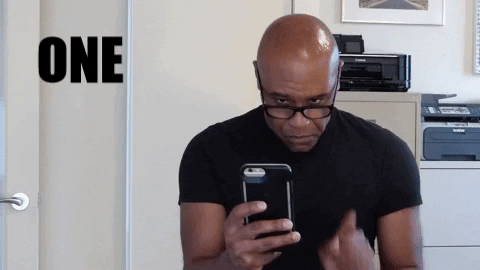Influencer-marketing is still a relatively fresh tool for businesses looking to expand their presence and reach. If you are such a business, you may be tempted to jump right into the game and get a hold of the likes of a Kim Kardashian simply to get your product out there.
While it may sound as simple as engaging an influencer to post an advertisement, there are many small but important details that you need to take note of to avoid issues like an upset influencer or an unengaged advertisement post. As such, here are 4 do’s and 4 don’ts that brands should take note of in order to execute a successful social media marketing campaign.
1. Do use the right influencers
In influencer marketing, selecting the right influencers to promote your business or product is crucial. Depending on your brand, you will want to have influencers with a suitable audience and content to represent your brand. Sometimes, the influencer’s popularity may be the least of your concerns as you want to appear more genuine and relatable to consumers.
As an influencer marketing platform, Singapore’s Partipost offers businesses a network of influencers from varying backgrounds who readily promote the brands that they truly love. By hosting campaigns through the platform, brands have the liberty to select their influencers and they can be sure that they will be using the most suitable ones for their marketing efforts.

2. Do work with different types of influencers
It is ideal to have a wider network of influencers that you can reach out to for your marketing needs. Not all macro-influencers or celebrities can appeal to the masses. In fact, some brands may find it more rewarding and cost efficient to work with micro-influencers who can relate to and communicate more genuinely with the average consumer

3. Don’t use influencers simply based on follower count
With that being said, remember not to select influencers simply because they have a massive following. It may be enticing or even easy to just engage an Instagram celebrity to advertise your product. But truthfully, higher followers doesn’t necessarily mean better.
According to this Medium article, the statistics have shown that engagement with an influencer’s content actually plateau’s after he/she has 100,000 followers. Consumers simply don’t feel that they can relate to them closely anymore. Therefore, using micro-influencers with a smaller following may sometimes prove to be more cost efficient than using macro-influencers.

4. Do provide influencers with direction
It is good to provide influencers with some guidelines and objectives to address in their social media posts. Some examples could be the style of the photo, or to include your business’ account in the caption or photo tag. This will give them a rough idea of your brand and what you want to achieve through them.
On the same note, each social media campaign on Partipost has clearly defined guidelines stated in the campaign brief. These instructions provide influencers with direction so that they can be sure of and be able to meet the brand’s marketing goals.

5. Don’t restrict influencers’ content.
With that being said, it is also important not to limit your influencers’ freedom over social media. Giving them direction does not mean that you control every single aspect of their content creation. Doing so will result in very unoriginal and mundane posts that will not be successful in engaging consumers.
Instead, as you provide them with some guidelines, do also allow influencers the space to communicate with their audience in the way that they best can. This genuine and authentic engagement speaks well with consumers and fosters a sense of trust in your brand. Partipost encourages all its influencers to be creative, to have fun, and most importantly, be themselves when they participate in social media campaigns.

6. Do compensate your influencers correctly
Brands should be aware of how the influencer industry runs and what rates influencers demand. You do not want to pay an influencer too much or too little, as you may blow your budget or potentially strain your business relationship with them.
Influencer-marketing services like Partipost save businesses such a hassle, as their social media marketing campaigns have payout structures based on engagement level. Brands can work with Partipost to figure out a payout structure that best suits their marketing strategy

7. Don’t just use Instagram
When the term “influencer” comes to mind, majority will think solely of the Instagram platform. However, as a business, it will be beneficial to also tap onto other social media platforms such as Facebook, which actually has more users over it than Instagram. This will extend your brand’s reach to a wider demographic as well.
Partipost is a unique influencer platform that hosts campaigns over Instagram AND Facebook. Should they feel the need to, brands can utilise this function to cater to their specific marketing needs.

8. Don’t create advertisements
While it may seem a little counterintuitive, try not to create advertisements! Consumers can be put off when they come across an overly curated post addressing a product or service, with the hashtag #ad or #sponsorship with it. Instead, you want your influencers to create genuine content that the masses can enjoy and be intrigued by. This genuine marketing is more effective in convincing consumers to give your product a shot.
The atmosphere and community we have built here at Partipost fosters genuine posts about genuine experiences. The posts that come through our platform are not simply done for the sake of a payout. We make it a point to remind our users to only join a campaign if they would recommend that brand for free!



